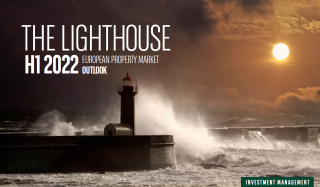In a political context which has been greatly affected by the war in Ukraine, within the investment community the biggest issue remains the substantial increase in inflation and the subsequent rise in interest rates.
Whilst real estate cannot hedge protect perfectly, the sector is known for its inflation-hedging advantages and as such its ability to resist the impact of inflation.
With the impact that inflation is having on the market, BNP Paribas REIM predicts greater polarisation to occur. This means that investors will be more inclined to seek safe locations and high-quality assets, in a bid to secure rental growth.
Energy efficiency is key
Increased regulation and pressure from investors and the general public will lead to substantially higher demand for energy efficient buildings. However, with demand from both the general public, those within the real estate sector and investors, sustainability only continues to be more and more requested. Whilst demand for energy-efficient buildings grows, such assets are still not widely available. This will result in pressure to refurbish existing stock and bring it in line with changing regulations across Europe. With price increases on energy, the need to have ecologically performing buildings is more important than ever, and will be a key driver in the development of real estate.
With the current geopolitical situation and the supply bottlenecks from the Covid-19 pandemic, the real estate sector is still experiencing a shortage of materials, notably building materials, which has resulted in increased construction costs. As a result, whilst there are currently new developments on the market, the rise of construction costs will likely delay or even cancel some projects, meaning vacancy rates will remain at record low levels. Therefore, whilst there is an expected slowdown in economic growth, BNP Paribas REIM predicts robust prime rental growth in the residential, healthcare, logistics and prime office sectors due to this imbalance between demand and supply.

The Lighthouse H1 2022
Hotel Outlook
by Nikola Nakov, Research Analyst at BNP Paribas REIM Germany
“In addition to significant increases in occupancy rates, Europe-wide RevPAR recorded growth of around 50% com-pared with the crisis year 2020, supported in particular by the recovery in leisure tourism. Alongside Southern Europe, Germany and France in particular benefited from strong domestic demand in the summer months, breathing fresh life into the vacation hotel industry.”
Office Outlook
by Clément Rabenandrasana, International Research, BNP Paribas Real Estate
“Two years after the pandemic, market trends are more than in line with our assumptions. First, the letting activity is pursuing of the recovery trajectory that began in 2021 and quarterly figures are back in line with their long-term averages. Indeed, take-up increased significantly at the end of Q1 2022 (+43% compared to last year), with 2.7 million sqm transacted in the 24 European markets tracked by BNP Paribas Real Estate.”
Retail Outlook
by Victoria Groene, Research Analyst at BNP Paribas REIM Germany
“SG-compliant assets promise higher profitability in the long-term. Emerging concepts like compact store design and interiors designed with renewable recycled materials are reducing consumption of space, energy and materials. They are supplementing their stores or platforms on the one hand with sustainably produced fashion, such as Globetrotter with “A Greener Choice”.”
Logistics Outlook
by Thomas Kotyrba, Head of Research at BNP Paribas Real Estate Germany
“The doubling of demand for logistics space in Europe over the last decade has gone hand-in-hand with a completely new structure for goods delivery in Europe, with a multitude of new logistics locations emerging across the continent. A major problem so far has been the availability of labour and space – both are often in short supply in established logistics clusters and new locations are emerging. Regions with higher unemployment or neighbouring other labour markets are attractive sites for new logistics units.”
Healthcare Outlook
by Olivier Denagiscarde, Investment Management Analyst at BNP Paribas Real Estate
“Thanks to institutional investors’ enthusiasm for healthcare, investment in the asset type has risen significantly over the last decade. In 2010, it represented just 0.5% of total investment in commercial real estate, whereas it now accounts for around 3%.
In terms of sub-segments, the vast majority of investment is still in nursing homes and senior housing, which fit at least three key criteria for institutional investors: good liquidity, high transparency, and significant deal size. Conversely, investment in medical offices remains marginal in value, due to a much lower maturity due to the lack of large portfolios.”
Residential Outlook
by Greg Mansell Head of Research at BNP Paribas Real Estate UK
“Job vacancy rates are at record highs, and businesses urgently need to raise wages to retain their employees and attract new ones. In the UK, for example, there are more vacant jobs than there are people looking for work for the first time in its recorded history,1 with a similar picture across Europe.
Considering this momentum, demand for rental properties is likely to grow. Meanwhile, the supply of good-quality homes to rent is unlikely to keep pace, as pressures on the cons-truction industry’s labour market and material prices mount.”




